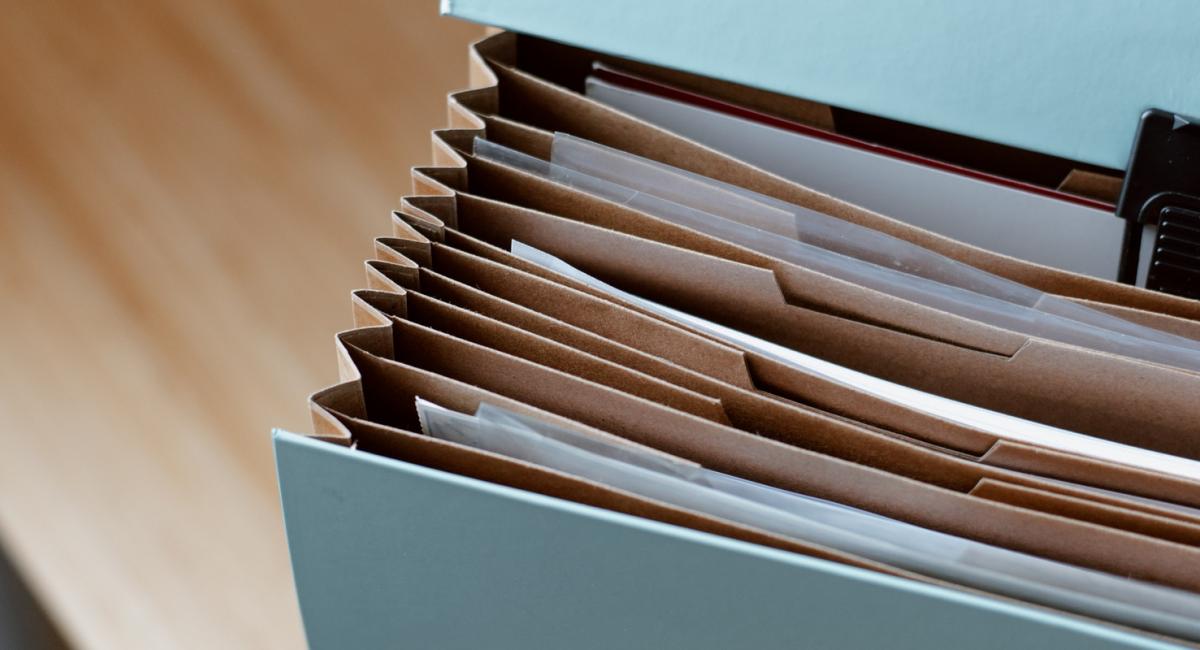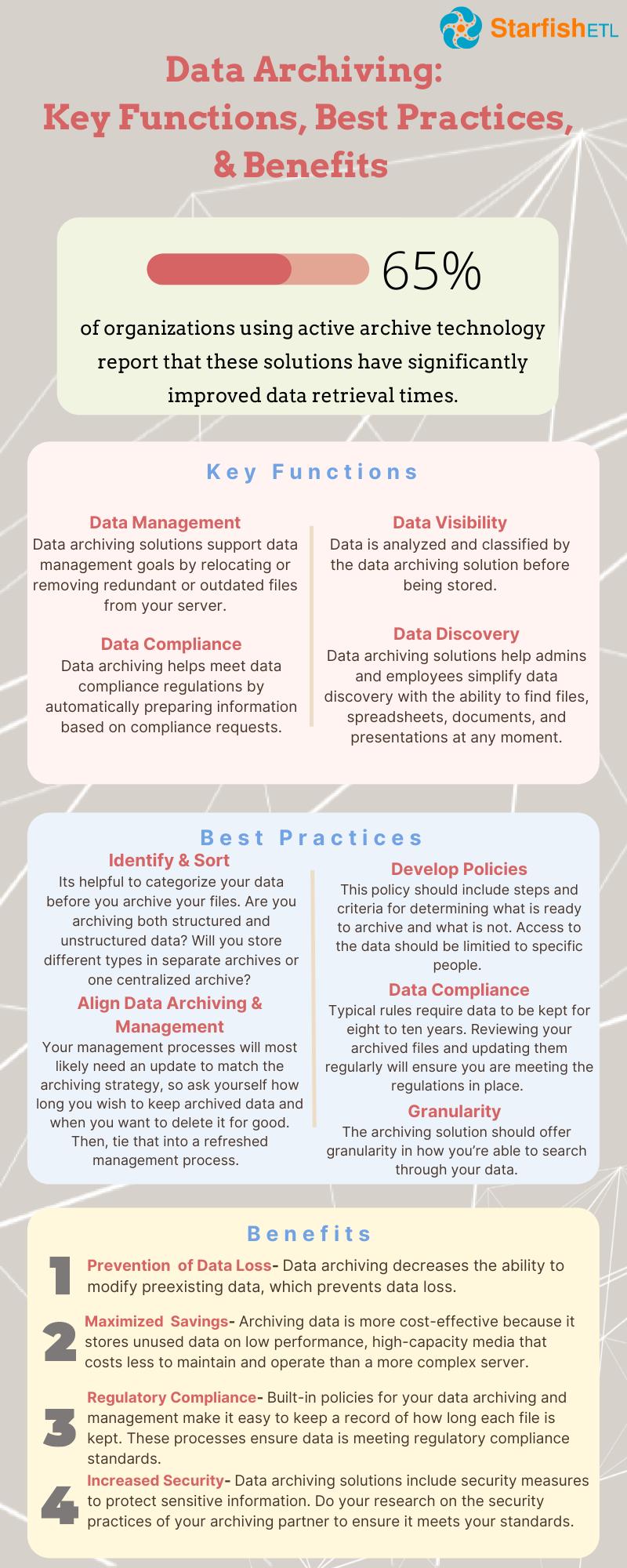[INFOGRAPHIC] Data Archiving: Key Functions, Best Practices, & Benefits


Data archiving is the process of removing unnecessary data files from your system and storing it in a safe location until it’s ready to be further processed. These steps are important for businesses of any size and are required by most industries.
The process of data archiving optimizes resources, speeds up response times, and allows data to perform at its best ability. It helps your system be more up-to-date and increases productivity. Once a file is archived, the system will protect its integrity. This process can be complicated, so having a plan in place will be most effective.
Here are the key functions, best practices, and benefits of data archiving:

Before archiving your data, take inventory. Which data do you need now, and which data can be archived? Are you archiving both structured and unstructured data? Will you store different types in separate archives or one centralized archive? It's helpful to categorize your data before you archive your files. If you have the same data in multiple systems, determine the primary location before archiving.
How does your current data management strategy fit in with the archiving plan? Data archiving and data lifecycle management go hand-in-hand to determine the proper lifespan of your data. Your management processes will most likely need an update to match the archiving strategy, so ask yourself how long you wish to keep archived data and when you want to delete it for good. Then tie that into a refreshed management process.
Creating a policy with procedures for documents to be archived will be beneficial for the overall process. The policy should include steps and criteria for determining what is ready to archive and what is not. Access to the archived data should also be limited to specific people for security reasons. Determining these roles early on will provide the security needed for maintaining this personal information.
Data compliance requires your business to keep files for a certain amount of time before you archive them. Compliance makes sure that all records are kept for at least a certain number of years. Typical rules require data to be kept for eight to ten years.
Survey results show that one-quarter of respondents said their company keeps files for over 10 years, with the average being 8.4 years. Reviewing your archived files and updating them regularly will ensure you are meeting the regulations in place.
The software you choose to support your data archiving strategy is just as important as the archiving itself. The archiving solution should offer granularity in how you’re able to search through your data. Since archiving stores massive amounts of different types of data, your software should execute searches based on granular attributes like:
Data archiving decreases the ability to modify preexisting data, which prevents data loss.
The data that companies archive often contains financial details and personally identifiable information. No matter how old that data is, it’s still sensitive and must be protected. The good news is, data archiving solutions include security measures to protect this information, but in the event of a breach, your company could also be held liable. Do your research on the security practices of your data archiving partner to ensure it meets your highest security standards.
Storing unnecessary data on live servers can slow down systems and hike-up costs. Many providers charge for hosting certain quantities of data. Archiving data is more cost-effective because it stores unused data on low performance, high-capacity media that costs less to maintain and operate than a more complex server.
Built-in policies for your data archiving and management make it easy to keep a record of how long each file is kept. These processes ensure data meets regulatory compliance standards and can be retrieved whenever necessary.
Archiving data has great benefits. It will improve functionality and increase effectiveness within your work. By focusing on these practices, you can ensure the data is organized, secure, and can't be retrieved by the wrong parties. To learn more about how we can help with your data archiving, visit our website.
Fill out the form below and we will contact you